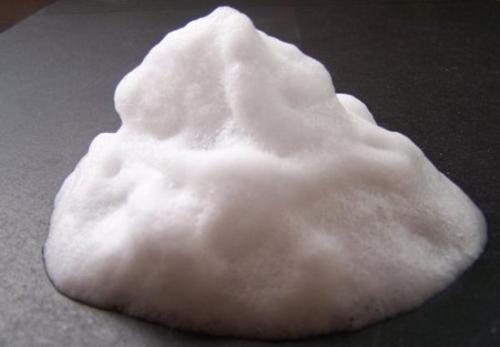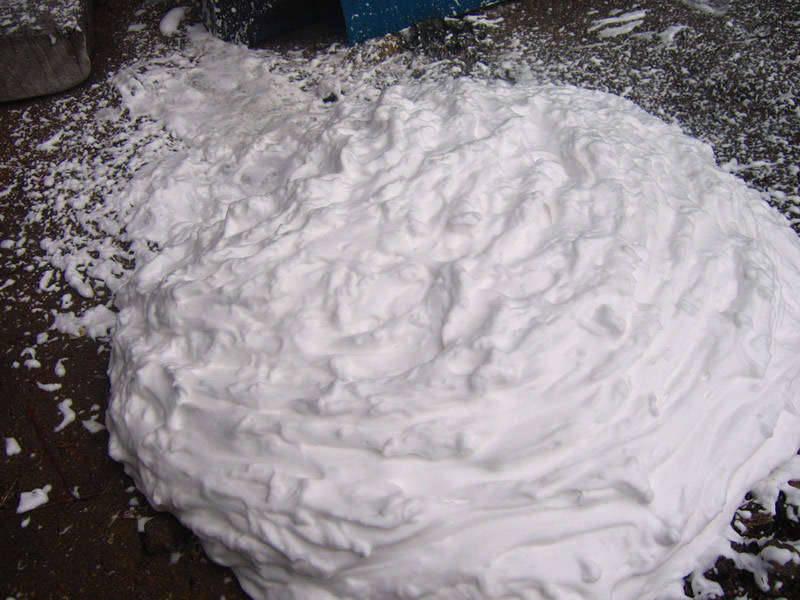At present, there are more than 10 testing methods for cement foaming agents in China, and the standards and testing methods developed by many companies themselves are not among them. These methods are as follows.
1. Foaming height method (Ross method orISO method)
The core of the foaming height method is to evaluate the performance of the foaming agent based on two technical indicators: the foaming height of the foaming agent and the half-dissolution time of the foam. The Ross method (Ross-Milles method) is currently the most common method for testing the foaming power of surfactants in the world, and is adopted by ISO international standards and designated as ISO-696-1975; our country refers to the Ross method, and has successively Several relevant testing standards and testing methods have been introduced, such as the former Ministry of Light Industry standard QB510-84, the national standard GB/T7462-1994, etc. Therefore, the Ross method is currently the most widely used and popular detection method at home and abroad.

Dimensions of the test instrument Ross-Miles foam meter used in QB510-84 Specification. Fill the dropper (P) with 200ml of test solution (the test solution level reaches the scale line G), and place it on the prepared tube rack (usually a cork can be used to install it on the mouth of the scale tube) so that the cross section of the scale tube is vertical. The solution flows to the center of the graduated tube, and the outlet of the dropper should be placed at the 900mm graduated line (G). There is 50ml of test solution in the graduated tube, which is injected from the bottom of the graduated tube. The test solution used is prepared with 150μg/g hard water and 2.5g sample. Open the stopper of the glass tube and let the solution flow down. When the solution in the dropper runs out, record the foam height immediately. Repeat the following test 2 to 3 times. The tube wall must be rinsed with test solution before each test. The test temperature of this method should be stable at 40℃±1℃. Use the method of passing constant temperature water through the jacket of the graduated measuring tube to ensure the temperature during the test. The test temperature specified in ISO-698-1975 is 50℃±1℃, and the results are expressed in milliliters of foam formed 30s, 3min and 5min after the liquid flow stops. If necessary, the corresponding V-t curve can be drawn. It is also stipulated that each test should be repeated at least 8 times to take the average value.
The main factor affecting the Ross method test results is the water temperature in the detector jacket. Since the foaming agent’s foam stabilization time and foaming power are very different at different temperatures, the water temperature in the jacket of the Ross foam meter’s scale tube will greatly affect the test results. The detection water temperature specified by QB510-84 is 40℃±1℃, while the water temperature specified by ISO-696-1975 is 50℃±1℃. Therefore, even if the Ross method is used, the test results will be different depending on the standards.

2. Foaming multiple and settlement distance method
This method is also one of the more commonly used detection methods abroad, and it is also widely used in China. It mainly uses three technical indicators: foaming multiple of the foaming agent, 1h foam settlement distance, and 1h foam bleeding amount to detect the quality of the foaming agent. Its detection data are not comparable to the Roth method. The detection method is as follows.
1. Technical indicators
Foaming agent: also known as foaming agent. Substances that can promote foaming and form closed-cell or joint-cell structural materials.
Foaming multiple: the multiple that the foam volume is greater than the volume of the foaming agent aqueous solution . </On a flat surface, cover the foam with a piece of paper and place it quietly in a windless place for 40 minutes p>
Then measure the foam subsidence distance.
Foaming power: Foaming power is measured by foam height. Take a certain amount of foaming agent, add a certain amount of water to make a solution, use an electric mixer to stir at medium speed for 10 minutes, and measure the foam height.
2. Technical standards and testing methods of a housing construction institute in Beijing
Technical indicators of foaming agent: The ph value is about 7.0; the foaming volume of 1kg of foaming agent is >500L; ② Preparation of foam: foaming using a high-speed mixer, technical parameters of foaming: the mixer speed is above 1200r/min, stirring The time limit is when the foam reaches uniformity, fineness, and stability. The brewing time of a mixer with a volume of 1m3 is generally 3-5 minutes.
3. Technical standards and testing methods of a university in Hainan
Technical standards: determine the foaming height and defoaming time Foam quality.
Place the 1000ml measuring cylinder upright, inject 200ml of the air-entraining solution to be measured along the cylinder wall, be careful not to generate bubbles, seal the mouth of the cylinder, invert it 10 times for 30 seconds, let it stand, and immediately use a ruler to measure. The bubble height (that is, the distance between the highest point of the foam and the liquid surface), record the defoaming time, and the concentration of the test solution is 0.1% (mass).
The current problems in foaming agent testing have seriously restricted our country Development of foamed cement. First, it makes it impossible for many foaming agent manufacturers to follow unified standards and cannot test their products. Each company has its own set of standards. Due to different technical indicators and testing methods, it is impossible to compare the quality of products. High-quality foaming agents are mixed with inferior foaming agents, making it difficult to distinguish. High-quality foaming agents are difficult to sell, which hinders the promotion and application of advanced technology. Second, many foaming agent users are unable to judge the quality of foaming agents, and are blind and confused in their selection and use.

 微信扫一扫打赏
微信扫一扫打赏

